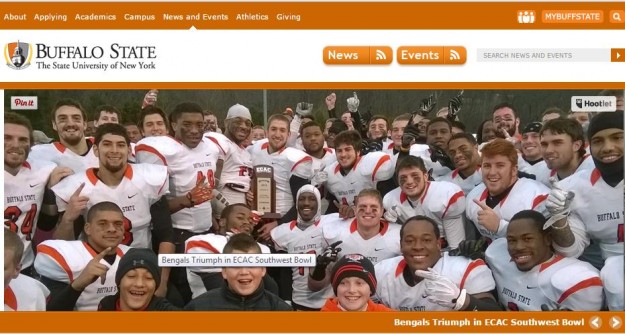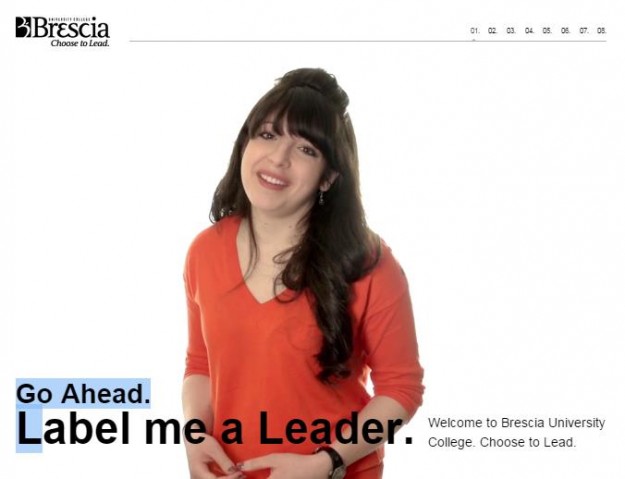Student engagement is the elusive objective of much of the content produced in higher ed marketing. To positively engage a prospective student with your print collateral, website or social media is no easy feat but it is clearly necessary to have a reasonable chance of attracting them to your college (and ultimately meeting your marketing goals.)
There are many more formal definitions of customer or marketing engagement, but I kind of like how this quote, from MIT academic Michael Schrange, sums up what engagement is really all about.
“Engagement is smack at the intersection of commanding attention and taking action.”
So getting 25,000 hits a month on your website homepage does not equal engagement. Posting a video on YouTube that gets played 100,000 times but that has no link back into your brand or marketing strategy is not engagement. Content consumption is not engagement. Engagement is getting the attention of your target student audience and having them interact with you around your common interests.
So how do your build engagement into your marketing content?
There are lots of rather academic and technical resources on this subject, with lengthy and often theoretical discussions about how to accomplish it. I have listed a couple of more detailed resources at the bottom of this post if you looking for more of that.
But rather than get complicated about it, the goal with this post is to share with you my simple formula for building and improving engagement for any higher ed marketing content. You can apply this approach to any type of content, channel or media. Just make sure you can say yes to each of these questions and your content will be more engaging. Guaranteed!
Q1) IS YOUR CONTENT EMOTIONALLY ENGAGING?
It is surprising how often higher ed marketers forget to apply the concepts of emotional marketing. We get focused on the academic, the technical, and the gory details and often completely forget about this most fundamental rule of communication and advertising. There must be an emotional element, a human element, that evokes some kind of emotional reaction for your message to truly resonate with an audience. An emotional response to content determines how much attention you will pay to it, what your conscious response will be, and how deeply ingrained something will become in your memory. Emotion is the single most effective tool you can use to provoke an action or reaction. If you build emotion into your content you will greatly improve your engagement.

Buffalo State wins ECAC Southwest Bowl

Brescia University Label me a Leader
Q2) IS YOUR CONTENT VISUALLY ENGAGING?
Visual content is the fastest growing content on the web today. Websites, YouTube, Facebook, Snapchat, Twitter, Slideshare, Instagram, Tumbler, Pinterest, and infographics are now all pivoting around images and video. Why? Because a picture is worth a 1000 words and people simply prefer not to have to read those 1000 words.

And yes, this statement does apply to straight text content as well. Proper typography and text design will produce dramatically better engagement with your reader. The visual imagery you create with your content is the key to engaging with your audience in today’s very visually oriented world. Make it an emotional, compelling image and you’re even better!

University of Utah Airport Poster Advertising
Q3) DOES YOUR CONTENT INCLUDE THE RIGHT STRUCTURAL ELEMENTS IT NEEDS TO ENGAGE?
So, strong emotional and visual content can get you the attention from the prospective student that you are after but you still need one more piece of the puzzle to realize our definition of engagement. That piece involves the prospective student taking an action to connect with you and/or your institution. That action can range widely from a retweet, to a follow, to a like, a lead form or simply clicking on a link bringing them one step closer to their objective. Regardless of the specific action your content must contain some kind of call to action to illicit this action. Value based statements and icons to share, link, read on etc will provide the best conversion rates to get you there. The most important thing is to provide value in one form another to the visitor. Be creative and experiment with your calls to action to find the right balance of action, value and fun. Clean and simple approaches, like the example below are often most effective.

University of Alberta Website Homepage

University of Connecticut Puppet Photo bombing Campaign
If you make sure you can respond yes to these three simple questions about your marketing content you can be certain that your engagement with prospective students will improve. I recommend you also go further to test this quantitatively by examining your engagement statistics like visitor time on page, click through rates and form conversion stats.
What are your personal approaches to improve student engagement? What have been your most successful engagement tactics with your recruitment marketing campaigns?
Other Resources:
Rules of Customer Engagement
How to Build Brand Engagement





